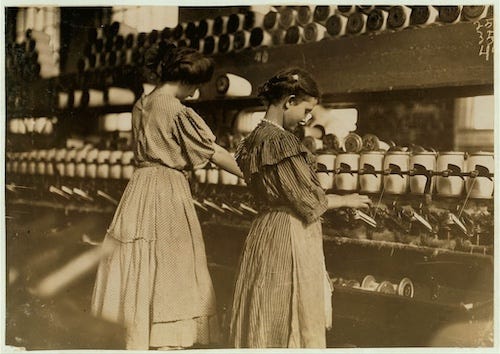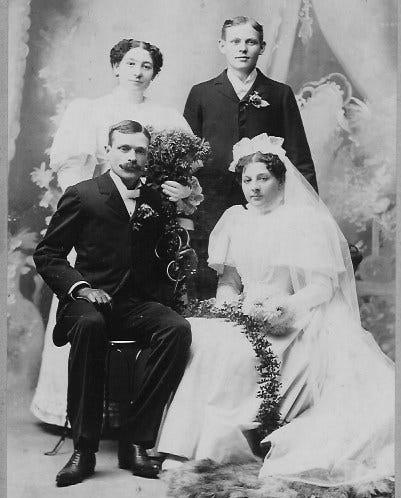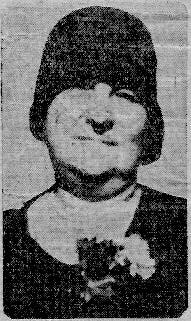Anna Simpson was born in 1874 as the eighth child of John Simpson and Margaretha Magin in Evansville, Indiana. She didn't spend much time playing when she was a child. At the age of 13, she began working as a spinner at the Evansville Cotton Manufacturing Company. This company was established a few years after the Civil War on seventeen acres west of St. Joseph Avenue near Ohio Street. (For those familiar with Evansville, this is where Mead Johnson was built after this company was closed.) In 1889, a local newspaper reported that it was the largest cotton mill in the South or West. At its peak, nearly a thousand women and children were employed, operating 50,000 spindles and 1,200 looms. However, labor issues led to the company's decline, and it was ultimately closed by 1910.

Annie, as she was known to her friends and family, was not alone in her work at the factory—her sisters Gertrude, Lizzie, and Maggie were also employed there, working 10-hour shifts, 60-hour weeks. Annie started her career as a spinner and worked her way up through various positions: spooler, carder, and speeder tender. Finally, at the age of 22, she was promoted to weaver, which was the most skilled position in the factory. Surrounded by power looms and the constant hum of the shuttle, she transformed yarn into fabric. Working in the cotton mill demanded stamina, attention to detail, and long hours, all of which helped support working-class families. Annie continued working as a weaver until she got married.
She married Henry Herman Goeke on November 10, 1897, at St. Boniface Catholic Church, a well-known German parish on Evansville’s west side.
One of the earliest glimpses of Anna and Henry is in a photograph taken at the 1896 wedding of Anna's sister, Gertrude Simpson. In the photo, Anna and Henry stand behind the newly married couple—Henry Heines and Gertrude Simpson —capturing a family moment and the beginning of a lifelong partnership rooted in quiet strength and community devotion.

Their daughter, Gertrude Margaret "Margie" Goeke, was born in Evansville on November 2, 1898, just over a year after Anna and Henry's wedding. Not long afterward, the family relocated to Memphis, Tennessee, where they would spend the rest of their lives.
Henry worked for Bannon Coal & Ice Company in Memphis, and Anna turned her attention to family and community. She left the paid workforce but soon gained a lasting reputation for her extraordinary charity and kindness. In her South Memphis neighborhood, she was fondly called "Ma" Goeke.
Known as a "friend of the friendless," she never turned away anyone in need. Neighbors remembered how she always provided food for destitute or hungry visitors. She often used her own money to help others, sometimes contributing as much as $200 a month—a significant amount for that time. Anna preferred not to be praised, believing that "very little be said" about her good deeds.
She was also active in local organizations, including the Women's Benefit Association, the Maccabees, St. Mary's Catholic Church, and several other charitable groups. She helped organize food drives, fundraisers, and yearly campaigns for the city’s Community Fund, always working behind the scenes to assist those less fortunate.

Anna passed away on February 22, 1933, at 59, in her home at 455 Alabama Street. Her funeral was held at St. Mary’s Catholic Church, and she was buried at Calvary Cemetery in Memphis. Though she was laid to rest there, no tombstone marks her grave. Perhaps this was in keeping with how she lived—quietly, humbly, and always more concerned with helping others than being recognized. Her legacy was never carved in stone but written into the lives she touched and the example she set: one of quiet compassion, generosity, and neighborly love.




These are rugged individuals, paving a better life for those to come.
If only the world had more people like Anna.